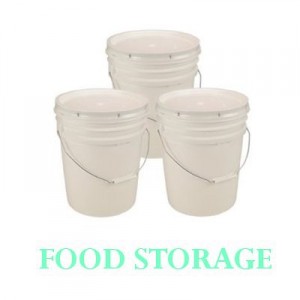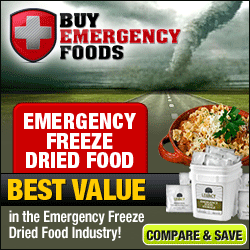 The summer is finally here, and that means a number of things: more sun, warmer weather, the kids are out of school, and much more. But with the summer comes a new set of responsibilities. The kinds of problems and disasters that occur in the summer can often be very different from those that we might face in the winter. Depending on where you live, natural disasters may be a more likely occurrence in the summer, and you can also be hit with things such as droughts, shortages and year-round problems such as unemployment, financial difficulties or food shortages. So to make sure that your food storage is fit for the summer, here is a handy summer food storage checklist.
The summer is finally here, and that means a number of things: more sun, warmer weather, the kids are out of school, and much more. But with the summer comes a new set of responsibilities. The kinds of problems and disasters that occur in the summer can often be very different from those that we might face in the winter. Depending on where you live, natural disasters may be a more likely occurrence in the summer, and you can also be hit with things such as droughts, shortages and year-round problems such as unemployment, financial difficulties or food shortages. So to make sure that your food storage is fit for the summer, here is a handy summer food storage checklist.
Picture Credit- $20 Set of 3 -Gallon White Bucket & Lid - Food Grade - BPA Free Plastic
Nonperishable Food Items
Your emergency food storage should always be full of nonperishable food items, as those are the only ones that will last for an extended period of time, meaning they will still be good when it comes to eating them. The summer makes this even more of a necessity however, as high temperatures can spoil food that might have otherwise been ok. Make sure that you only store foods that will not melt or spoil in the heat, especially if you store your food somewhere such as an attic or basement that is not insulated.
Good Containers
The summertime also increases the need for proper storage of the food that you have. There are a lot more little creatures and pests crawling around in the summer, so it becomes much more important to properly store your food. Make sure every food item is locked in airtight containers that are free of harmful chemicals that may contaminate the food. It is also a good idea to store your food somewhere in your house where it can be mostly kept out of the heat. Cool, dark places are the best to store food for long periods of time.
Other Non-Food Summer Essentials
Don’t forget that it is important to stock other things in an emergency supply—non-food items that are also essential. Such items include toothpaste, soap, medication, a first-aid kit, and anything else that you need, either on a regular basis or for emergencies. In the summer, there are a few specific items that you might need. Store some sunblock; if you were forced to leave your house at a moment’s notice and live rough for a day, you will be grateful for it. Also include insect repellent. These should be included in a special survival kit that can be carried and will last you for at least 72 hours.
Extra Water
There should be plenty of water stored in your emergency food supply, but in the summer months you are more likely to get dehydrated. Store a little extra to allow for this. Your area could also experience a drought or a contaminated water supply, which will increase the need for drinking water. Don’t forget to also store water for cleaning, washing, and cooking. At least a gallon per person is required.
Summer Food
Although it is not necessary, you might also want to switch up your menu for the summer months. By planning exactly what you will eat and store, you can make sure that your menu is varied as well as interesting. After all, the food that we feel like eating in the summer is often very different from that which we eat in the winter. And besides, it might be fun!
Lee Flynn is a writer, food prepper and all-around food storage expert.









